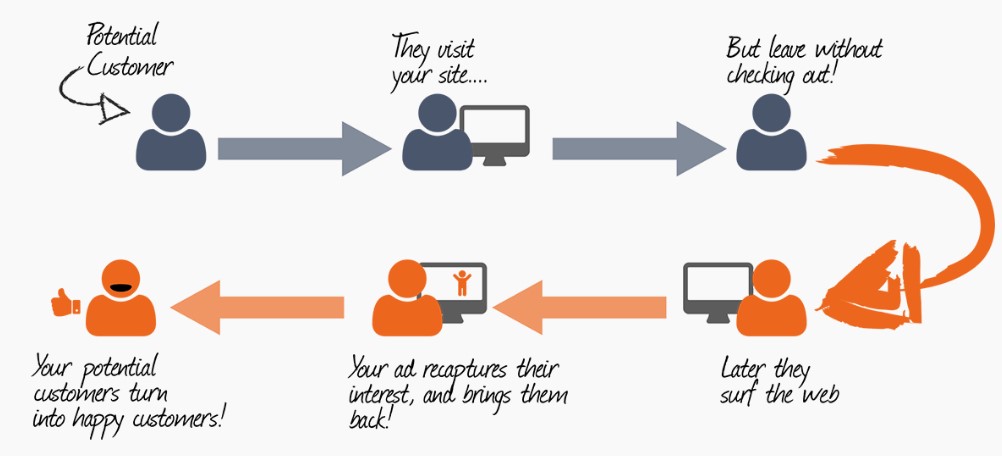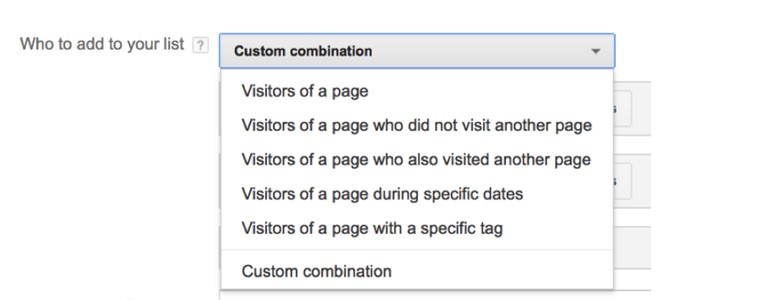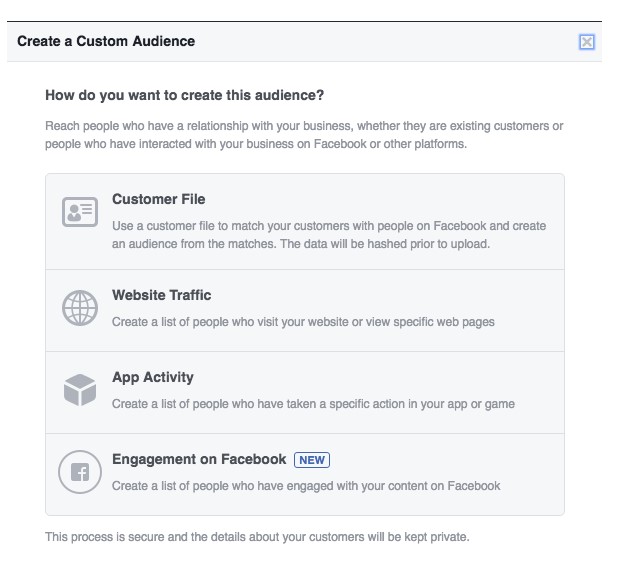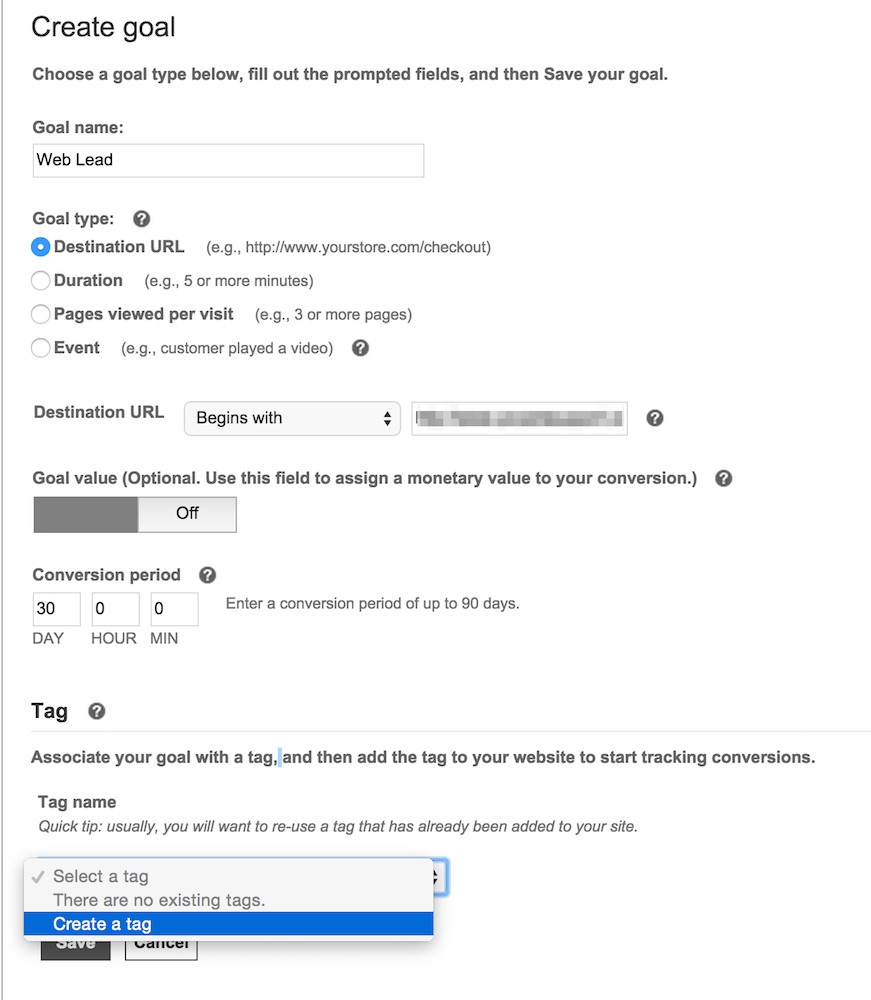What are the Different Types of Remarketing Ads

What is Remarketing?
Do you feel like internet adverts follow you?
Consider this: You researched workflow management tools. You recall visiting many websites concerning workflow management tools. Since no tool stood out and your requirement wasn’t urgent, you decided to continue searching later.
Some websites you visited convinced you to buy a different tool.
The websites are magically what you need. They knew you needed help and followed you online with repeated adverts.
You clicked on an ad because it addressed a specific concern you had about buying a tool. The ad led you to a post-click landing page with all the necessary information, yet you didn’t convert.
That’s remarketing.
When consumers search on Google or Bing, they are remarketed. It uses marketing tags and tracking pixels to provide tailored adverts to consumers who have visited your website or post-click landing page but not converted.
Remarketing keeps your brand in front of potential consumers’ eyes (and minds) after they leave your website, encouraging them to return when they need it.
This visual by Retargeter aptly explains how remarketing campaigns work:

Why is Remarketing Important?
According to Marketo, 96% of website visitors aren’t ready to buy. That’s a lot of non-converting website traffic you’re losing out on.
Remarketing campaigns allow you to target these visitors with targeted adverts designed to persuade them to convert. Remarketing reminds and convinces visitors who weren’t ready to convert.
These advertising perform because they target people who already like your product. With social media, search engines, and email, you can remind them why your product is the best answer.
WordStream says remarketing tactics enhance conversion rates.
Remarketing vs. Retargeting: Differences
Retargeting and remarketing are interchangeable marketing words. This section explains if they pertain to the same notion of reaching out to brand-engaged users.
Retargeting refers to online display adverts displayed to website visitors who left without taking action. This marketing uses tracking pixels or cookies to offer tailored advertising to users after they leave your website.
Retargeting advertisements are provided to visitors through third-party networks like Google Display Network and Facebook, allowing you to reach potential consumers on several websites.
Retargeting uses display advertisements on third-party networks, whereas remarketing uses email. So, for remarketing, you need your visitors’ email addresses, but not for retargeting.
Most marketers, however, combine remarketing and retargeting into one campaign. They do so because Google defines remarketing as follows:
Visitors to your website or mobile app might be retargeted. Remarketing lets you reconnect with website visitors who leave without buying by presenting relevant adverts across devices.
Most marketers follow Google’s lead and refer both retargeting display advertisements and email remarketing as “remarketing.”
Remarketing efforts may boost brand familiarity, remember visitors to your post-click landing page, and encourage them to take action.
The subsequent parts of this tutorial describe how remarketing campaigns operate, how to build up your own campaigns, and why you should always connect your remarketing advertisements to suitable post-click landing sites. The guide closes with remarketing success measures.
Different Types of Remarketing Ad Campaigns
Remarketing campaigns provide businesses with a one-of-a-kind opportunity to reconnect with website visitors who have left their sites without making a purchase by using tailored advertisements or emails.
These remarketing messages have the potential to boost the possibility that your site visitors will return to your post-click landing page and take an action there. This type of marketing helps you generate sales activity on your websites, promotes brand recognition among engaged audiences, and ultimately increases the return on investment (ROI) you see from your efforts.
There are five primary sorts of remarketing campaigns, and they are as follows:
- Standard Remarketing
- Remarketing that is Dynamic
- Lists for Remarketing Use with Search Ads
- Video Remarketing
- Email Remarketing
1. Standard Remarketing
This sort of remarketing entails presenting display adverts to previous visitors (visitors who landed on your homepage and then left), while those visitors are navigating their way around other websites that use the Google Display Network applications and social media websites such as Facebook. Visitors that use search engines like Google to look for phrases that are associated with the goods or services that you provide are likewise targeted by standard remarketing techniques.
2. Dynamic Remarketing
Serving advertisements to visitors that are precisely tailored for them based on how they have browsed a website is an example of dynamic remarketing. These advertisements are displayed to users after they have visited the website. Remarketing of this sort involves the creation of advertising messages that are tailored precisely to the visitor who is seeing the advertisement. This increases the likelihood of the visitor returning to your website to retrieve the products that they had previously abandoned.
For instance, dynamic remarketing advertising on an ecommerce website might include the same shopping item(s) that a visitor placed in their abandoned shopping cart, which increases the likelihood that the visitor would click the ad when they see that item again and are interested in purchasing it.
Your dynamic remarketing ad should focus on the pricing topic if a visitor spent some time on the pricing page before leaving your website. You could also use the opportunity to remind them of an offer for a free trial or a discount.
Remarketing advertisements can also be displayed to site visitors after they have looked through your blog or other instructional content, with the goal of convincing them to download a guide or sign up for a webinar that is relevant to the subject matter that they are interested in learning more about.
3. Lists for Remarketing Utilization in Search Ads (RLSAs)
Google AdWords provides remarketing lists for search advertising, which enables you to tailor your search ad campaigns to people who have previously browsed your website. Remarketing lists for search ads can be found here. When users search for anything using Google or one of its partner search engines, you have the ability to target your bids and advertisements to the specific users who have visited your website in the past.
You may place advertisements of this kind on remarketing networks to target customers who leave your website and subsequently search Google for information about comparable products or services. When it comes to RLSAs, there are two fundamental techniques that should be followed:
- Establish individual bids for each of your existing keywords that will apply to visitors on your remarketing lists. For instance, you have the option of raising your price by thirty percent for customers who have visited your website during the previous thirty days. You are able to direct certain advertisements toward site visitors if they have either carried out an activity on your website (such as viewing the price page or the frequently asked questions section) or placed an item in their shopping cart.
- For people who have gone to your website or who have purchased something from you in the past, place bids on keywords that you wouldn’t ordinarily place bids on. For instance, you may place bids on more general keywords simply for those who have been to your website in the past in order to cast a larger net and increase the likelihood that they would return to your brand.
4. Video Remarketing
Displaying remarketing advertisements to site visitors who have just watched one of your videos or to those who have been on your website is an essential part of video remarketing.
You have the choice of displaying video remarketing advertising on YouTube either at the beginning of or in-between the films that potential consumers are watching. In either case, the viewers will have the ability to skip the advertisement. You may also place remarketing ads in the right-hand margin, which is where users will see suggestions for videos to watch.
5. Email Remarketing
Email remarketing encompasses two different marketing strategies:
- Serving display advertisements from your remarketing campaign across a variety of websites to people who have opened an email from you.
- Sending targeted follow-up emails to customers who visited your website but did not complete a transaction. These emails should encourage customers to return to your site and finish what they started there.
It is imperative that you remember the importance of effective segmentation no matter what sort of remarketing strategy you choose to implement. You will then be able to present targeted and tailored mails and advertisements to visitors, which have a greater chance of persuading them to return to your business and make a purchase.
In the next chapter, we will go over how you may collect data for your remarketing campaigns, what campaign goals you need to define, and how you can correctly segment your remarketing audiences in order to enhance the return on investment (ROI) of your ads.
How are remarketing data gathered?
To conduct campaigns smoothly, obtain remarketing audience data. Two main techniques to gather an audience list are:
1.Pixel-Based Remarketing: Most prevalent audience collecting method. Your website or post-click landing page will need to have a JavaScript code (a pixel). When a visitor visits your website or post-click landing page, the pixel drops an anonymous browser cookie. The pixel tells your supplier (whether you’re using Google remarketing or a social network like Facebook) when a visitor leaves your page and browses other sites.
Pixel-based retargeting ensures that visitors who’ve visited your website or post-click landing page see your adverts. Visitors can instantly start viewing adverts that can entice them to return to your offer with pixel-based remarketing.
2. List-Based Remarketing: List-based remarketing uses email addresses of previous customers or visitors to retarget adverts. For example, you want your blog readers to download an ebook or upgrade from a free trial to a premium subscription. Both instances use list-based remarketing.
To start list-based remarketing, add your email contacts to your remarketing platform, and your audience will see your adverts online. You may also send customised emails to your audience.
Now that we’ve discussed remarketing, let’s look at campaign goals.
Remarketing programs have two fundamental goals:
- Awareness: Campaigns can retarget visitors with product features and other updates. This aim is less targeted because it’s for new visitors. Your awareness initiatives can lead to your conversion campaigns.
- Conversion: You want visitors to identify your brand for conversion initiatives. You want them to click the ad, visit a post-click landing page, and fill out a form.
Whether your remarketing campaign is aimed at brand recognition or conversion, the advertising and landing pages must be designed for re-engagement.
Audience segmentation helps create optimized remarketing advertising and post-click landing pages.
Audience segmentation divides prospective clients based on demographics and interests. Segmentation allows you to establish particular target groups for your marketing initiatives. Create advertising and landing pages that can convert these groups.
For remarketing, separate your audience by these three factors:
Behavior-based remarketing
A visitor can display one of two sorts of behavior while on your website:
- Uninterested (these people stay on your site for a few seconds, then leave)
- Interested (visitors examine website content, maybe even the blog, price page, or about us area).
This category has little intent, therefore sending them remarketing advertisements will simply increase your expenditure and decrease your ROI. “Interested” visitors have high intent and are more likely to return to your business and buy if offered the proper ad wording.
You may build more “Interested” audience segments and personalize remarketing advertising depending on website activity.
Ads that ask for an email address in return for a free ebook or newsletter, etc., can be used to remarket to visitors who have read your blog, about us, or resources sections. You may show hard-sell advertising to customers who have visited your product page and examined your price plan.
Time-segmented remarketing
This technique segments three things:
- Time between a website visit and the first ad.
- Ad frequency.
- The period between a first visit to your website and the end of remarketing adverts.
Google AdWords and Facebook both have 30-day defaults for when visitors are added to and removed from retargeting lists. If they visit the website within 30 days, the 30-day cycle resets. Depending on your campaign, you can adjust this limit.
Remarketing campaigns require caution. It’s bad for your business to show adverts too soon, especially to visitors who just stay a few seconds.
Ad frequency should also be monitored. Repeating an ad on a website is ineffective and spammy.
With remarketing campaigns, rotating tailored adverts for the length of your campaigns is the ideal method. This helps your audience investigate your brand and learn your messaging. Thus encouraging them to visit your post-click landing page and click on the call-to-action button.
Customer Segmentation for Remarketing
This audience segment has the biggest possibility of clicking on your post-click landing page and converting for your newest offer because they already know your brand and product. Personalized remarketing emails perform well for this population as well.
When you introduce a new product feature, you may remarket to current clients; this works great for inactive users. Any new feature might energize them. Existing customers are an excellent target for remarketing efforts to upsell.
Segmenting your remarketing audience correctly may make or break your remarketing initiatives. Now that you know which audience groups work for remarketing, set up your campaigns on Google AdWords, Facebook, and Bing Ads.
Set up remarketing campaigns
Remarketing campaigns can be run on Google AdWords, Facebook, or Bing Ads. This chapter explains how to start remarketing on each platform.
Google AdWords Remarketing
Your ads get the most exposure with Google AdWords remarketing. Google Display Network reaches 92% of US visitors across millions of websites, videos, and devices.
Follow these steps to set up Google AdWords remarketing:
- Access AdWords.
- Select ‘Shared Library’
- Click “Audiences.”
- Click ‘Remarket’.
- Click View Website AdWords Tag.
- Copy the remarketing tag code given for both mobile and desktop websites.
- Add the tag code to the campaign website pages.
- Save and publish.
- Use ‘Google Tag Assist’ to test your tag.
- Click ‘Next’
- Click ‘Audiences’
Within a few days, your tag will start gathering visitors’ cookies and your ‘All Visitors’ list will fill up.
When planning your campaign, consider:
Customizing Lists
AdWords automatically produces a retargeting list of all tagged page visitors. You may, however, develop your own customized lists to provide more focused adverts.

Set membership duration to match your promotions. The default membership term is 30 days. You can extend this period up to 540 days.
Examine
To test your remarketing campaigns, do the following:
- Ad Testing: Experiment with alternative ad messages for your different audience lists. Test different ad and button copy combinations to discover which one gets the most clicks.
- Custom Combination Testing: Try different membership durations with different audience lists to determine which works best.
- Frequency Cap Testing: Test ad frequency.
- Bid Testing: Adjust bids for expenses, impression share, and ROI.
- Post-click landing page testing: The messaging on your remarketing post-click landing page is crucial. Test copy and design to find which combination converts best.
You may conduct the following sorts of remarketing campaigns with Google AdWords:
- Standard Remarketing: Showing advertisements to prior visitors on Display Network websites and apps.
- Dynamic Remarketing: Visitors see adverts for items or services they looked at on your site.
- Remarketing for mobile apps: Show advertising to users who’ve used your app or site.
- Remarketing lists for advertisements: Show adverts when visitors perform follow-up Google searches.
Show adverts to YouTube viewers.
- Email List Remarketing: Upload a list of your customers’ email addresses, and they’ll see your advertising on other websites.
- Google AdWords remarketing ads let you reach many users on numerous websites.
Facebook remarketing
Start a Facebook remarketing campaign with a Business advertisements account. After signing up, pick Audiences in Facebook Ads Manager.
Select “Custom Audiences” for remarketing to target website visitors with relevant advertising.
Select “Website Traffic” from the Custom Audiences category to build a list of website visitors.

- Website visitors
- Page-visitors
- People only browse certain pages
- People who haven’t visited in a while
- Mix-and-match
Each audience selection has a date range. You’re granted 30 days by default, but you may expand it based on your remarketing offer’s lifespan.
After you choose your audience, Facebook offers you a pixel tracking code called the Facebook Pixel to track website visitors:
Remarketing on Facebook has several benefits:
Conversion tracking: The Facebook Pixel collects data on how visitors engage with other websites after visiting yours. Tracking customer activity across devices helps you tweak your ad strategy and execute stronger campaigns.
-
- Dynamic Adverts- You may display visitors ads based on their website visit. Personalized advertising has a greater click-through rate since they’re more relevant.
- Run remarketing campaigns for Lookalike Audiences (people who have similar interests and demographics to visitors who have visited your website). This can help you grow your audience.
- Employ Custom Conversions: Custom conversions use URL rules based on specific URLs or keywords. Instead of tracking a normal event or all page views, you may track a part of a page. This allows you to build more targeted adverts and audience segmentation.
The Facebook Pixel may also provide retargeting advertising to Instagram visitors.
Bing remarketing
Bing Ads remarketing lets you reach website visitors who left without taking action.
Universal Event Tracking lets you track website visits (UET). Place the UET on the website pages you wish to track to start your campaign. You may separate audiences who have taken particular online activities into marketing lists.

Ads you develop for remarketing campaigns on Google AdWords, Facebook, or Bing must be optimized and linked to suitable post-click landing sites.
The Best Ways to Optimize Remarketing Ads
Your audience doesn’t care about your remarketing platform, frequency cap, or segregated lists. Ads and post-click landing sites are displayed. Them matters.
If you haven’t optimized your advertisements and linked them to suitable post-click landing pages, your Google AdWords remarketing campaigns won’t be successful.
- Remarketing efforts employ graphics, video, and rich media to engage viewers.
- To design effective display advertising, make sure the image and wording relate to the product feature or deal you’re promoting. Creating multiple display advertising for each remarketing audience group helps you design laser-targeted ads.
- Visitors click advertisements because they’re seeking for a solution to a problem, therefore your ad must convince them to investigate. To do this, write ad content that incorporates terms your audience will notice.
- Display ad branding is another consideration. Keep your branding consistent so that visitors to your post-click landing page know they’ve arrived.
- It should be related to the visitors’ experience on your website and written in such a way that they pay attention to it.
- Related, aesthetically attractive media: An animation or static picture should be relevant to the ad copy’s offer.
- Ad CTA buttons should be made in contrasting colors and feature actionable, tailored wording to get clicks.
Display advertising have limited characters, so don’t write too much. Ad text that gets to the point quickly and gives a click-incentive will get more clicks..
Remarketing advertisements are segmented; not everyone wants every product feature. Why send people to a homepage that doesn’t promote anything?
Post-click landing pages allow you to attract people with the same ad message. This helps people see what they want without distractions and boosts CTA button conversions.
Optimized remarketing post-click landing page elements:
A concise, persuasive, empathic title that links to your ad is required.
- Relevant and eye-catching page media is required.
- The call-to-action button must be a contrasting color and offer-specific.
- Label fields and don’t request superfluous information.
- The page should include trust indicators (testimonials, customer badges, statistics).
- No off-page navigation connections.
- The text must mention your USP and support ad claims.
Now build remarketing campaigns.
Remarketing strategies reach the 98% of visitors who depart without converting. Create segmented audience lists and mix them with remarketing advertisements and post-click landing pages to enhance consumer conversion and brand exposure.
Testing remarketing display advertisements and post-click landing pages helps you develop campaigns that convert.

